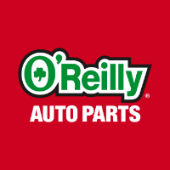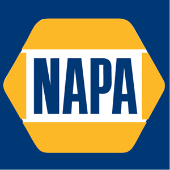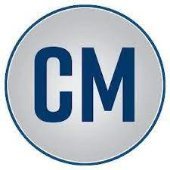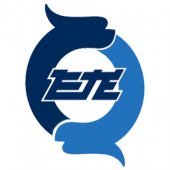-
Welcome to Auto Parts Forum
Whether you are a veteran automotive parts guru or just someone looking for some quick auto parts advice, register today and start a new topic in our forum. Registration is free and you can even sign up with social network platforms such as Facebook, X, and LinkedIn.
Meguiars Dual Action Polisher For Smooth Surface
-
Similar Content
-
- 0 replies
- 25 views
-
- 0 replies
- 40 views
-
- 0 replies
- 28 views
-
- 0 replies
- 28 views
-
- 0 replies
- 43 views
-
-
Similar Topics
-
By NAPA
High Limit Racing returned to full-time competition over the weekend with two stops the Lone Star State, and Brad Sweet earned a pair of top-five finishes in a strong restart for the
link hidden, please login to view No. 49 team. With Friday night’s program at Texarkana 67 Speedway canceled due to rain, Sweet and the No. 49 team made their way directly to Texas Motor Speedway for Saturday night’s show. With 49 days since his last race, the Big Cat was determined to make a mark on the series and the season. Sweet set the pace right from the start. During qualifying, the NAPA driver claimed the top spot with a blistering, 13.735-second lap.
As competition heated up, the five-time World of Outlaws champion continued to shine. Sweet finished third after starting fourth in his heat race and earned a ticket to the dash by being the fastest car in his heat. During the dash draw, Sweet drew fifth. He maintained his position over seven laps to line up fifth to start the feature. He again advanced during the evening’s feature race, crossing the line third for the final podium spot.
On Sunday, the No. 49 team traveled to Crandall, Texas, for another evening of High Limit Racing at RPM Speedway. Sweet wasted no time, showing again in qualifying the speed of the NAPA machine. Posting a lightning-fast lap time of 12.245 seconds, the Big Cat went to the top of the speed chart.
In his heat race, Sweet climbed from fourth to second, securing a spot in the dash. Starting in sixth place gave the team seven laps to perfect their setup for the main event. The NAPA driver advanced to fifth and locked in that spot for the start of the evening’s 30-lap main event.
The NAPA No. 49 team put forth their best effort as Sweet navigated the Crandall race track. Maintaining his position throughout the race, Sweet crossed the finish line in fifth for his second top-five finish on the weekend.
Start / Finish:
Saturday, April 13, Texas Motor Speedway: 5 / 3
Sunday, April 14, RPM Speedway: 5 / 5
Points Standing / Total: 2nd / 386 pts. (-18)
Next Race: Tuesday, April 16, Red Dirt Raceway, Meeker, OK
How to Watch or Listen:
link hidden, please login to view NAPA:
link hidden, please login to viewBrad Sweet: link hidden, please login to view
Kasey Kahne Racing: link hidden, please login to view The post
link hidden, please login to view appeared first on link hidden, please login to view.
link hidden, please login to view -
By Counterman
What was wrong with universal joints anyhow? After all, they worked fine for years, and they still do! This is true, and U-joints can handle a lot of torque, but they do have a downside in the nature of their operating characteristics.
Here are the basics: U-joints are located on the ends of a driveshaft, mounted between the driveshaft and a front and rear yoke. The front yoke attaches to the transmission and the rear yoke attaches to the rear differential. As the engine moves from the effects of torque and as the suspension of a vehicle travels up and down, the angle of the driveshaft changes.
A U-joint does two things. First, it transfers the motion between the yoke(s) and driveshaft; and second, it does this at different angles, allowing for driveline movement. Here’s where the fun begins. When a yoke and the driveshaft are in perfect alignment, the velocity from one is transferred to the other at the same rate. However, when there’s an angle between the two, the velocity of the driven member fluctuates continuously during rotation.
It can be hard to visualize, but the reason this happens is that as the angle of the U-joint changes, the two halves of the U-joint cross are forced to rotate on a different axis. The drive axis remains at a constant velocity, and both ends of the U-joint cross rotate in the same consistent circular path.
The driven axis, however, rotates in a path that causes the distance of travel at the outer ends of the U-joint cross to increase or decrease in relation to the consistent points of the drive axis.
This effect results in the continuous fluctuation of velocity between the input and output sides. While the input remains at a consistent speed, the output speeds up and slows down as the points of the driven axis continuously alter between a long and short path of travel.
So, why don’t we feel that on a vehicle with a traditional driveshaft? Because there are two U-joints, and the fluctuation on each end balances out, effectively allowing the driveshaft to provide a consistent output speed to the rear differential. The angle of the two joints must be the same, however, and it doesn’t take much wear in one for the angles to differ, and subsequently cause a vibration.
U-joints are known for their propensity to cause vibration, and the other disadvantage they have is the greater the angle of the U-joint, the greater the fluctuation in velocity. Anything over 30 degrees and the fluctuation dramatically increases. Have you ever noticed how jittery an old four-wheel-drive truck feels in the front when the hubs are locked and you turn a corner? Now you know why.
You may have heard of a Double-Cardan U-joint. It’s basically two joints side-by-side with a common link-yoke in between. This is one of the original concepts for a true constant-velocity (CV) joint, and they’re often referred to as this. The advantage they have is they offer smoother operation at greater angles, and they’re common on four-wheel-drive trucks, and a common upgrade for lifted trucks where the driveshaft angle is altered considerably.
The drawback to a Double-Cardan joint is they’re bulky, and they still can suffer from limitations due to operating angle. True CV joints as we know them today have been around since the early 20th century, but the popularity of the front-wheel-drive (FWD) vehicle is what made them a household name.
Today’s CV joints are a radical departure from anything resembling a U-joint, and not only do CV joints transfer power without speed fluctuation, but they also can operate at angles up to and exceeding 50 degrees, depending on the joint. Since the drive wheels on a front-wheel-drive vehicle also steer, the ability for this increased operating angle is what makes the CV joint so beneficial for FWD.
A front-wheel-drive vehicle has two CV shafts – one on each side – and each shaft features an outboard and inboard joint. The outboard joints are considered fixed joints, meaning they don’t offer in and out movement. It’s their ability to operate at the increased angles for steering that’s important. The inboard joints are considered plunge joints, meaning they offer a wide range of inner and outer directional movement in order to make up for length differences as the suspension travels up and down.
Types of CV Joints
You’ll see two types of CV joints. One is the Rzeppa design, which features steel balls trapped in a cage and riding on an inner and outer race. The tri-pod design is the second, which features three roller bearings that ride in a race or cage, sometimes referred to as a tulip assembly. Both types of joints can be found in either a fixed or plunging design for outboard or inboard use, but the Rzeppa design has proven more popular as an outboard joint. The Rzeppa works well as an inboard joint too, but the tri-pod design gets the nod for the most effective operation as a plunge joint.
The CV shafts themselves can differ in length from side to side, and in early FWD development, torque steer – the vehicle pulling in one direction or the other during acceleration – was sometimes a result of this difference. Different diameter shafts as well as hollow versus solid became part of the design aspects to combat this problem. Drivetrain mounting and torque control have advanced considerably since the early days of FWD, and torque steer rarely is a problem.
Even though the FWD vehicle put the true CV joint on the map, due to their overall advantages, CV shafts now are utilized front and rear, and it’s not uncommon to see driveshafts that feature CV joints instead of U-joints. U-joints aren’t forgotten, however, due to their ability to handle high torque, and they work well in abusive environments that may not be so friendly to the boot on a CV joint (such as the exposed location of a driveshaft under a truck).
CV joints are packed with a specially formulated grease, and a rubber boot is sealed to both the CV shaft and the joint, to keep the grease in place. When a boot is torn or begins to leak, the grease goes away, and dirt gets inside. CV joints typically need no service until this happens.
There was a time when the most common service for a bad boot was to remove the CV joint, take it apart, clean it, repack it and install a new boot. Generally, this was routine. However, from time to time you could experience a nightmare. Much of the reason we replaced the boots and serviced the joints in this manner was due to the high cost of a replacement joint or a complete shaft. Even with the additional labor, it was far more cost-effective to replace just the boot.
Over time, with advancements in manufacturing and the availability of supplies, the cost of complete CV shafts went down, and it simply made more sense to replace them as a complete unit, not to mention it makes things easier for technicians.
Selling Tips
The most important part of selling a new CV shaft is making sure it’s the correct one. You should compare shaft length, the size of the CV joints themselves, and make sure it has an ABS tone ring installed if the vehicle is equipped with an anti-lock braking system. Some early CV joints had the tone ring cast into them, but that design was quickly abandoned for a press-fit tone ring. If your customer doesn’t yet have the original shaft out, be sure and make these recommendations to them so they ensure the shaft is correct prior to installation.
Installing a CV shaft is routine for professional technicians, but DIYers likely will have questions. One of the most important factors is torque of the fastener that secures the outer CV joint in the hub. If they don’t adhere to the factory procedure and don’t follow the correct torque specification, damage can and will occur to the wheel bearing.
Some CV-shaft applications come with an ABS tone ring installed, regardless of whether or not the vehicle is equipped with ABS. If not, in most cases, the ring has no consequence. However, in the rare situation where it rubs or contacts something, the rings can be removed easily.
The tricky part of CV-shaft service is there are some you can have out in a few minutes without even removing a wheel, and others that may take an hour or longer. The majority of them require some portion of the suspension to be separated, so the outer joint can be pulled out of the wheel bearing, then the entire shaft pulled outward as it’s removed from the transaxle. It’s fair warning that this is not always easy and might require specialized tools. As long as you convey that to the customer, they can’t say you didn’t warn them.
The post
link hidden, please login to view appeared first on link hidden, please login to view.
link hidden, please login to view -
By Auto News
link hidden, please login to viewAre you a severe driver? Normal driving is defined as steady driving in non-extreme weather or environments, so for most motorists today, being a severe driver is more the rule than the exception. According to the non-profit Car Care Council, severe driving includes: Stop-and-go traffic Short commutes Heavier loads: cargo, passenger or towing a trailer Rough or mountainous roads Dusty or salty environments Driving in extremely hot or cold weather “While most driving is considered ‘severe’ according to the definition, limiting the amount of wear and tear on your vehicle, and improving fuel economy, can be achieved in a few easy steps,” said Rich White, executive director, Car Care Council. “By taking action, your vehicle will perform safely, dependably and efficiently with proper maintenance and repairs for years to come, regardless of the driving conditions.”
The Car Care Council recommends that motorists be car care aware and take a few easy steps to reduce the effects of severe driving on their vehicles.
Follow the “severe” service schedule in your owner’s manual. Check fluids, including oil, and filters more frequently. Have certain components such as brakes and shocks inspected more regularly. Observe the speed limit. Gas mileage decreases rapidly above 60 mph. Avoid quick starts and stops. Aggressive driving can lower gas mileage. Don’t haul unneeded items in the trunk as extra weight will reduce fuel economy. Keep your car properly tuned to improve gas mileage. Order a free copy of the 80-page Car Care Guide at link hidden, please login to view. The council’s popular
link hidden, please login to view is available electronically or printed copy in English and Spanish. The guide covers major vehicle systems, component groups within the vehicle, service interval recommendations and much more. The Car Care Council is the source of information for the “Be Car Care Aware” consumer education campaign promoting the benefits of regular vehicle care, maintenance and repair to consumers. For the latest car care news, visit the council’s online media room at
link hidden, please login to view. To order a free copy of the popular Car Care Guide, visit the council’s consumer education website at link hidden, please login to view. The post
link hidden, please login to view appeared first on link hidden, please login to view.
link hidden, please login to view -
By Erica Zhu Feilong Jiangli
Automobile surface drawing parts have the following characteristics:
1.Deformation characteristics
The deformation characteristics of large curved surface parts are as follows: the periphery is deep drawing, and the interior has bulging components. The surface shape is supplemented by the exterior material of the pressing surface and the interior by the material extension to meet the bulging requirements. At the same time, due to the deep drawing depth and complex shape, the distribution of deformation parts is uneven. Therefore, controlling the direction and velocity of material is extremely important. The part of large curved surface is easy to wrinkle and crack easily.
2.There must be enough stable blank holder force.
Large curved surface parts require not only certain drawing force, but also enough stable blank holder force in the process of drawing. This kind of workpiece is often a large contour size, deep space surface, so the need for deformation and blank holder force are larger. In the ordinary single-action press with air cushion, the blank holder is only about 1/6 of the nominal tonnage, and the blank holder force is not stable, it is difficult to meet the technological requirements of such parts, so in a large number of production, the drawing of such parts are carried out on double-action press. The double-action press has two sliders for drawing and blank-holder, i.e. inner slider and outer slider. The blank-holder force can reach more than 40% - 50% of the total drawing force. It can satisfy the requirement of uneven distribution of deformation around the workpiece, and the blank-holder force is stable, and it is easy to get the deep-drawing parts with better stiffness.
3.The drawing parts must have enough stiffness.
Most of these parts are used as the exterior of the machine, requiring sufficient stiffness (no trembling and noise in use) and dimensional stability (to ensure the quality of welding and assembly). This requires that all parts of the material be subjected to uniform tensile stress (ideally a two-way tensile stress state) in the drawing process, and that the tensile stress exceeds the yield limit, but is lower than the strength limit, so that the elastic recovery of the workpiece is reduced to a minimum, so that the shape is not distorted, but also not rupted.

-
By Garage Gurus
For the information and tips you need for a complete brake job, visit Garage Gurus fmgaragegurus.com. Which brake lathe tool bit ...
-





Recommended Posts
Join the conversation
You can post now and register later. If you have an account, sign in now to post with your account.
Note: Your post will require moderator approval before it will be visible.